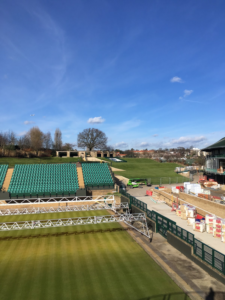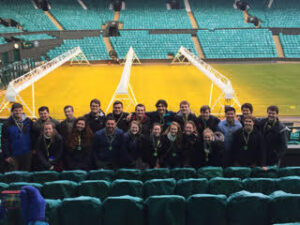On Saturday, March 3rd, most of us went to Ramón Sánchez Pizjuán Stadium to watch
Sevilla FC take on Athletic Bilbao. We arrived at the stadium and were pleasantly surprised to
see how close our seats were to the field. Despite the rain, we were all excited to see how Sevilla
FC would compare to cross-town rivals Betis. There was a large Sevilla fan section that was in
perfect view from our seats. That section was standing and waving flags the entire match. They
had songs and chants to keep the energy high for the full 90 minutes. Aside from the hardcore
Seville fan section the stadium was surprisingly empty. This was likely due to the rainy weather,
which is uncommon in typically sunny Sevilla. The game ended in a 2-0 victory for Sevilla,
with goals coming in the 27th and 32nd minute. Watching Sevilla score was particularly fun
because their goals were not only accompanied by cheering but also by singing and dancing. We
were glad to see a home team victory!
The main difference between the Sevilla FC game and the Real Betis game was the
atmosphere. The Betis game had a more energetic atmosphere, despite the Sevilla fan’s
reputation for being lively. This disparity was likely caused by the bad weather of the Sevilla
game. The Betis game was on a clear and warm night whereas Sevilla was cold and rainy.
Additionally, Betis was playing Real Madrid, one of the most famous soccer teams in the world,
and featured one of the most famous soccer players in the world, Cristiano Ronaldo.
Furthermore, the Betis game featured a whopping eight goals, with Sevilla took a 2-0 lead by the
32nd minute. Both games had a lively atmosphere and were great experiences but the
circumstances of the Betis game caused it to be more exciting.



















